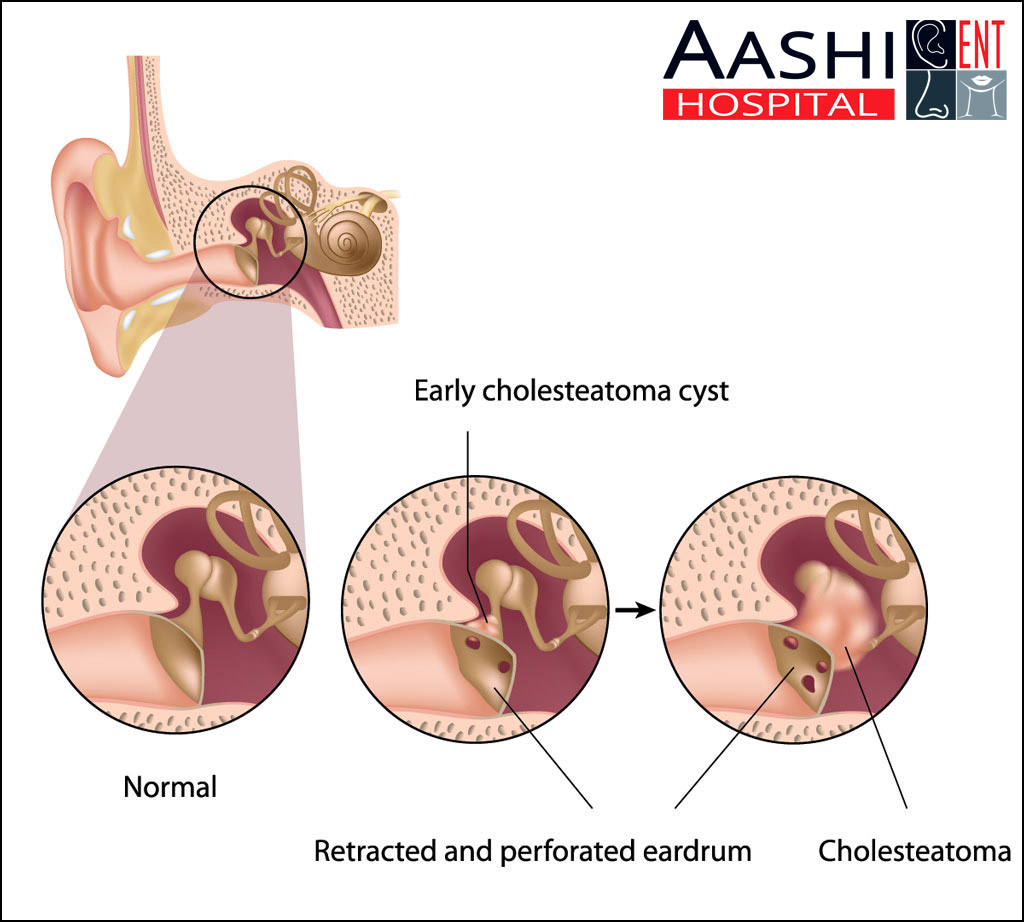Mastoidectomy: Overview, Procedure, Complications, and Technique
- Mastoidectomy is most commonly performed to remove a cholesteatoma. This is a cyst formed from dead skin that can grow in the middle ear and is usually associated with a perforation. A cholesteatoma can permanently damage hearing, and can have life-threatening complications if left untreated.
- The mastoid bone can be felt behind the ear. It contains a honeycomb of air spaces that connects to the middle ear. A cholesteatoma gradually spreads backwards from the middle ear into the mastoid, and it is impossible to tell how big it is simply by looking down the ear canal.
- The operation is performed under a general anaesthetic and requires an overnight stay in hospital.

- An incision is usually made behind the ear. The mastoid bone is opened with a drill and the cholesteatoma is cleaned out. A piece of tissue called a graft is used to repair the eardrum. This graft is normally taken from just under the skin behind the ear.
- An incision is usually made behind the ear. The mastoid bone is opened with a drill and the cholesteatoma is cleaned out. A piece of tissue called a graft is used to repair the eardrum. This graft is normally taken from just under the skin behind the ear.
- A gauze wick is placed in the ear, where it remains for 2–4 weeks. A firm head bandage is applied overnight to keep pressure on the ear and prevent bleeding.
- Pain after mastoidectomy is mild to moderate and is controlled with simple painkillers. You can return to work after 2 weeks, although you will have to visit the outpatient department to have the packing removed and then for regular inspection and cleaning of the ear. You must not go swimming for several months.

